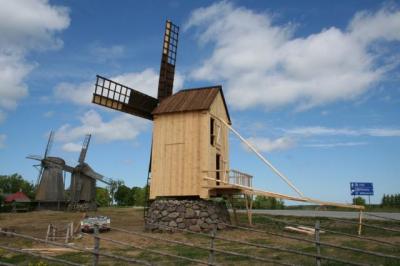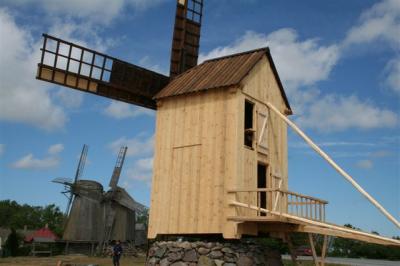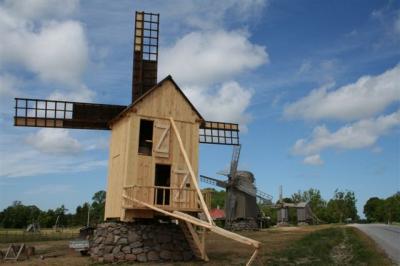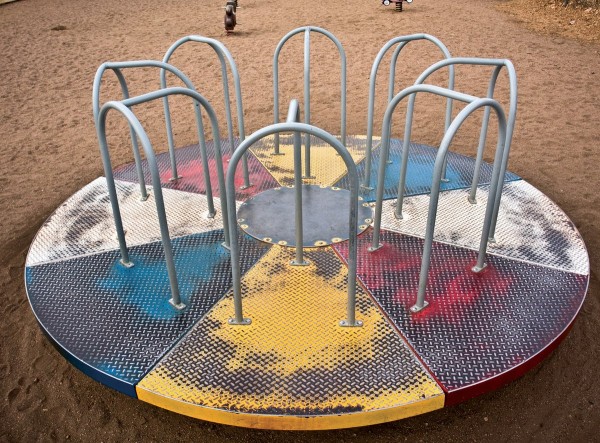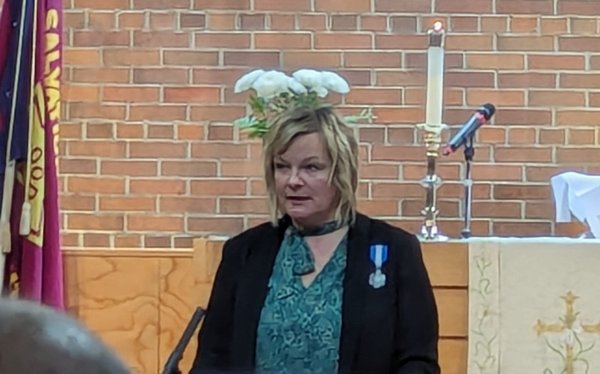For many, the term tuuleveski (tuul = wind, veski = mill) may be more familiar, but the shorter form tuulik seems more palatable. The windmill in question isn’t actually new in town, it just seemed deceptively so a week before its official re-opening, while standing alongside its grey, weather-beaten brothers.
Entire rows of tuulikud, for many the symbol of Saaremaa, used to line village roads, but the group at Angla is the best preserved. Four of the Angla windmills: Viita (1910), Lause (1910 or 1913), Vilidu (1913) and Reinu (1924) are pukktuulikud (post mills), the earliest type of European windmill, whose defining feature is that the whole body of the mill that houses the machinery is mounted on a single vertical post, around which it can be turned to bring the sails (tiivad = wings) into the wind. This is done by lifting and pushing along the exterior tail pole (vihmer, or veskisaba = „mill tail“) at the back.
The fifth, largest and next in line to be revamped at Angla is the Tedre talu (farm) hollandi tuuleveski (smock mill), built in 1927 and also known simply as the hollandlane (Dutchman), a style which, as the Estonian name reveals, hails from the Netherlands. The smock mill consists of a sloping, horizontally weatherboarded tower, usually with six or eight sides, on top of which is a roof or cap, which can rotate to bring the sails into the wind. It got its name from its supposed resemblance to a farmer’s smock.
Donning the möldri kittel (miller’s smock) inside Vilidu tuulik will be local retired farmer Jaan Vatsfeldt. Following an old custom, he sprinkled flour fresh from the veskikivid (millstones) onto the heads of local dignitaries and visiting Minister of Culture Laine Jänes at the opening, as a symbol of luck.
Strong northerly winds used to be considered the best for milling, producing a fine, smooth flour (jahu). Grinding during the time of the waning moon was thought to prevent the meal from going bad. If the winds were good, the mills worked 24 hours a day, stopping only on Saturday and Sunday nights.
Except for its famous sails, the tiny hamlet of Angla (population 22), is usually overshadowed by its medieval neighbour the 13th century Karja church, famous for the unique pagan symbols painted on the dome of its choir. If you long to feel the power and energy of times gone by, this is definitely a good spot. Karja (“of the herd”, kari = herd), is one of the four oldest place names in Eesti. Karja cemetery borders the windmills to the south and Karja bakery, operating out of a former manor house, is just down the road. Its breads are sold throughout Eesti, but will it start using flour ground at Angla?
When it is time to continue on your way, just follow the little blue sign on the right of the photo. It reads: Leisi 5 (kms straight ahead), Pärsama 5 and Karja kirik 2 (to the right).
There’s a new tuulik in town (2)
Archived Articles | 27 Jun 2008 | EWR
Viimased kommentaarid
Kommentaarid on kirjutatud EWR lugejate poolt. Nende sisu ei pruugi ühtida EWR toimetuse seisukohtadega.
Et Laine Jänes kõnniks Riina kõrval, viisakas seljataguses meeskond/naiskond kaamerameestega, noh, paljulubavvõimalus.
Tunduvalt mõistlikum kui rahavstikuminister Urve Palot Seedriorul saatva telemeeskonnaga kontakteerumine...
ETV 2 mehed, pange tähele! Isamaa ilu hoieldes! Vaenlase (ja teadmatuse ) vastu võideldes!
Tunduvalt mõistlikum kui rahavstikuminister Urve Palot Seedriorul saatva telemeeskonnaga kontakteerumine...
ETV 2 mehed, pange tähele! Isamaa ilu hoieldes! Vaenlase (ja teadmatuse ) vastu võideldes!
Thanks, Riina, for an interesting and heart-warming story. You have such a nice touch for journalism.
One day soon, I hope that someone writes a story about you so that we can know how it is that you practice your craft equally well in English and Estonian.
On this particular assignment, I wish that you had a cameraman in tow. Then, we could see the look on the face of Miss Perfect, with never a hair out of place, our Minister of Culture, as an old farmer dusted her hair with flour for good luck. I'm sure she was thinking that she's insufficiently paid for such humiliations.
Someone should tell her that it's the price of going into politics and it looks good on her.
One day soon, I hope that someone writes a story about you so that we can know how it is that you practice your craft equally well in English and Estonian.
On this particular assignment, I wish that you had a cameraman in tow. Then, we could see the look on the face of Miss Perfect, with never a hair out of place, our Minister of Culture, as an old farmer dusted her hair with flour for good luck. I'm sure she was thinking that she's insufficiently paid for such humiliations.
Someone should tell her that it's the price of going into politics and it looks good on her.
Archived Articles
TRENDING






